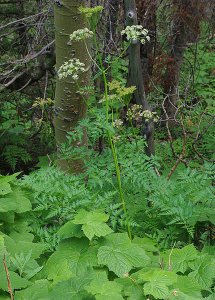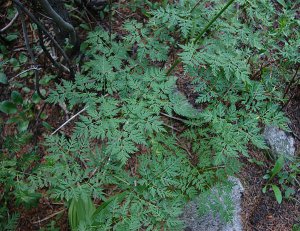An Introduction to Loveroot:
Loveroot or Ligusticum porter is a flowery herb that lies in carrot family. You can find it in various parts of the US And Mexico. You may consider it a very versatile Native Medicinal Herb.
Places where you can spot Love root:
Loveroot can be found in mountaineous regions. It thrives in the conditions that they provide. You would have a better chance of finding it if moist soil and a bit of shade comes up. Places like the Rocky Mountains are some of the best places to look for Love root and even parts of Mexico too.
Physical Appearance:
Love root is an herb/plant that lies in the carrot family and practically has similar physical features to a carrot’s as well. It has white flowers and leaves that resemble those of parsley. Its roots are dark in color with a rich brown hue and have a rather wrinkled texture to them. The flesh or inner part of the root is a bit fibrous and has a yellowish coloration to it. It also has a particularly strong scent as well. The plants grow in clumps and can get quite large with time. Close to 6 or 7 feet at times or 72 to 84 inches in height.

Distribution and importance:
As previously mentioned this plant can be found the US and Mexico. With the Rocky Mountains being an important place for the plant to grow at. The plant may usually be used for medical purposes. It is advised not to eat the plant raw as it is usually prepared for consumption.
Importantly, Loveroot looks extremely similar to a deadly plant by the name of Poison Hemlock or Coinum maculatum. It can be tricky to find a difference between the two though there is one thing; Poison hemlock grows closer to water bodies. Cow parsnip (another similar plant) has been confused with Loveroot due to how similar they look. The surprising thing about these two is that they exist in the same environments and it is imperative that you keep a watchful eye out when hunting for Loveroot.
The role of this Native Herb in Cooking:
As of now there are no detailed records (not that I know of) on how to use this herb in any culinary practices yet oddly, bears prefer to munch on this herb now and then (Maybe they are on to something that we haven’t picked up yet).
The Medicinal Uses of this American Native Herb:
This herb really shines when it comes to medicinal uses and the Native Americans actively used it. One tribe used it to treat body aches. The roots are considered a key part in medicinal preparation and practitioners use them to treat various illnesses. At times the roots would be prepared by being crushed and soaked in water to be used as a means of relief for a sore throat. Various other tribes would use Loveroot to treat an upset stomach, Gas, a cold or even a sting or even bite from venomous creatures. Some tribes even believed that the herb had magical properties too.

Conclusion:
In the end, Loveroot is a versatile medicinal herb. Culinary experts may not have looked at it yet but it does have a remarkable history when it comes to folk medicine. If carefully picked and confirmed that what you did get is Loveroot (not Poison Hemlock) it may be used in home medicine. You may treat ailments such as colds, stomach issues and more with Loveroot.
Many of our readers find that subscribing to Eat The Planet is the best way to make sure they don't miss any of our valuable information about wild edibles.
See our privacy policy for more information about ads on this site






